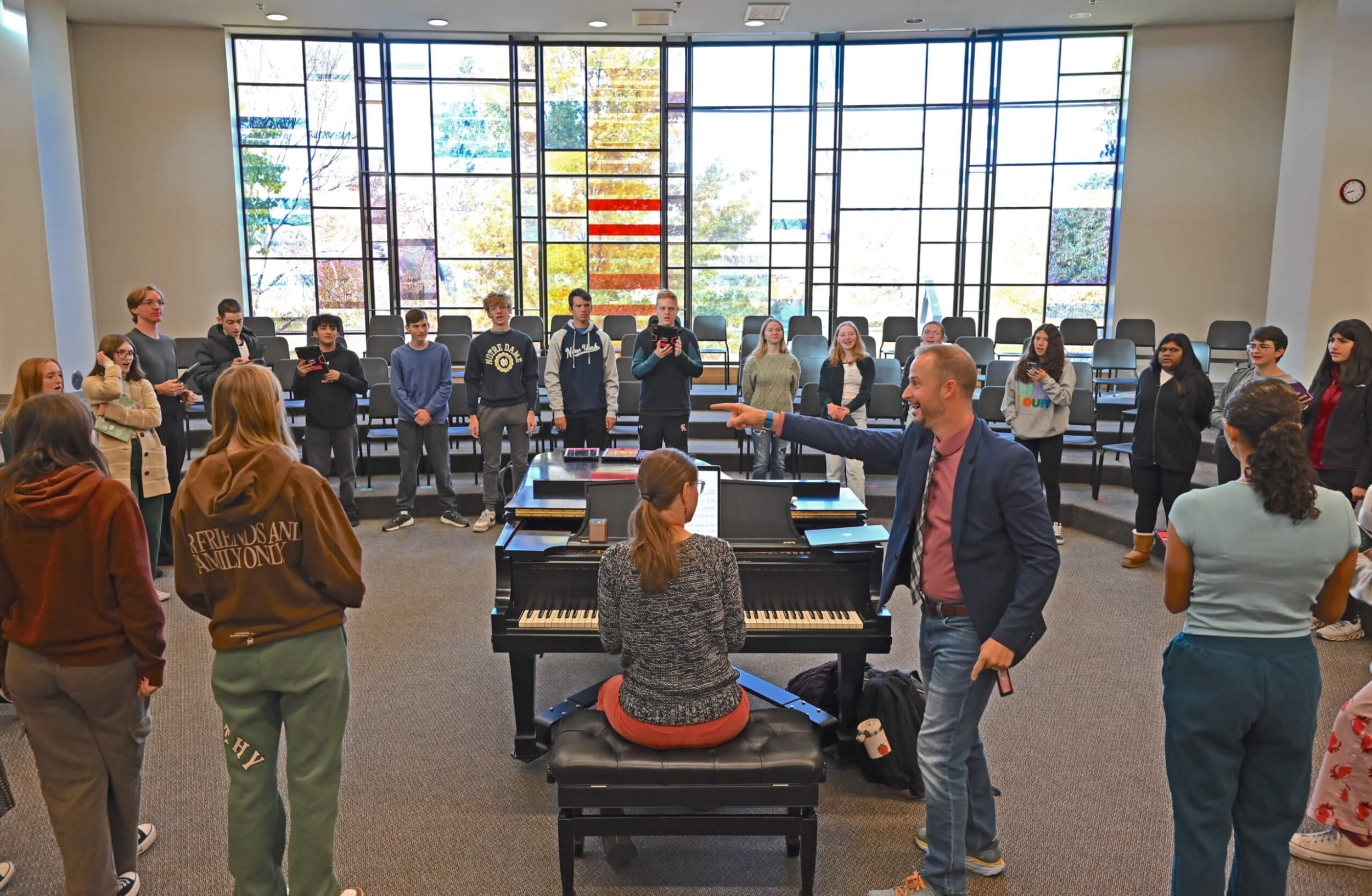“Life is too short to settle for bad music.”
That’s the simple raison d’être of Colorado Academy’s ambitious, adventurous choral program in the Middle School and Upper School, according to Dr. Kevin Padworski, CA’s vocal music director.
“We all have our Spotify playlists,” he continues, “but to truly grasp what counts as ‘good’—why we like Taylor Swift, say—we have to understand the incredible history of music that lies behind it.”
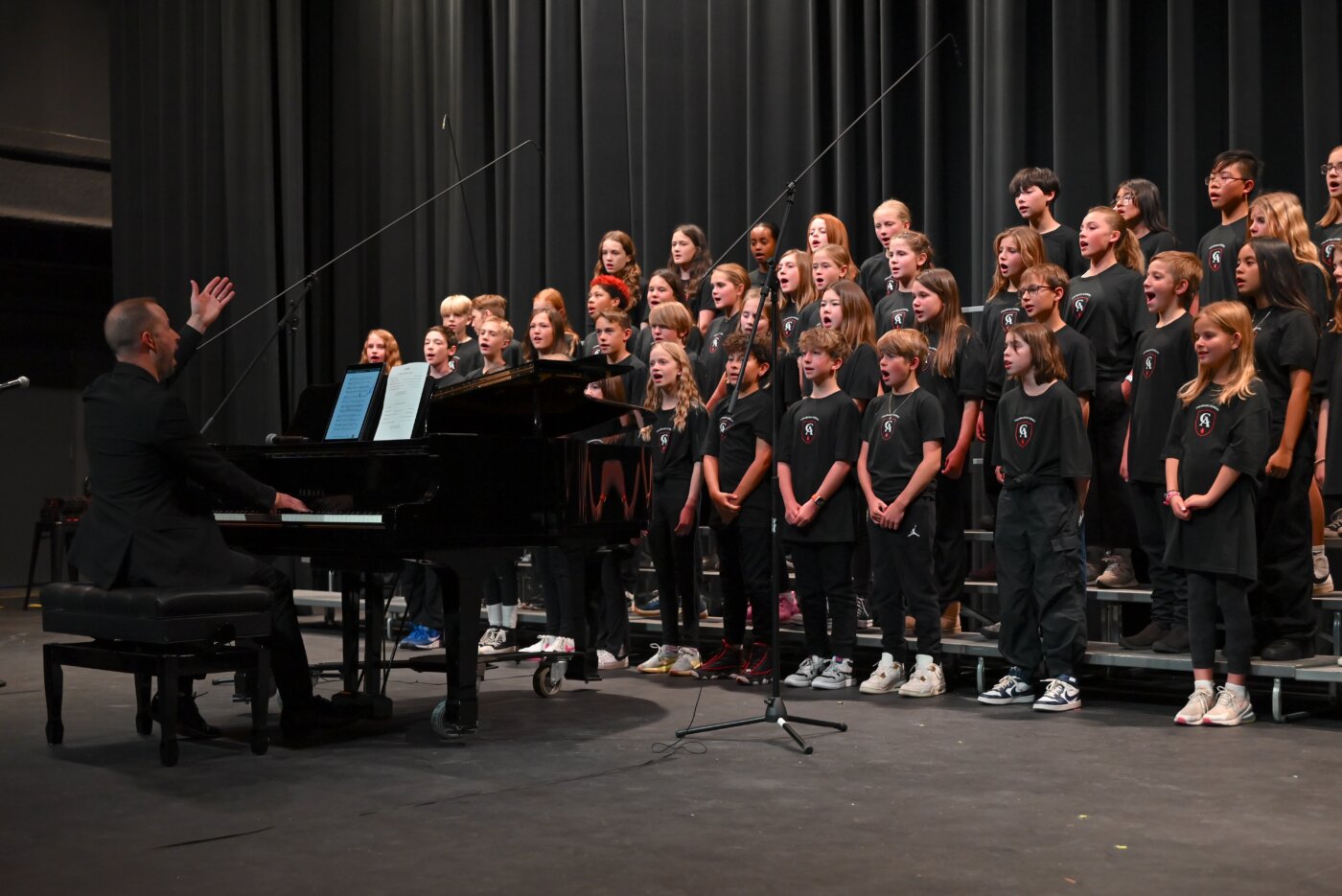
This fall, Padworski challenged his two groups of Upper School singers, Chamber Choir and Chanteurs, to look far, far behind the crowd-pleasing repertoire typical of school ensembles. The dozen members of Chamber Choir labored to master the intricacies of compositions from the Classical canon, such as Mozart’s 18th-century “Ave Verum Corpus” (K. 618), while the Chanteurs, larger than ever at 42 singers, focused on an even older madrigal composed by King Henry VIII, the Renaissance hit “Pasttime with Gud Companye.”
“This is music that just does not sound like today’s music,” he explains, “but it is essential in understanding how music evolved over time, and why a Taylor Swift song sounds the way it does in 2024.”
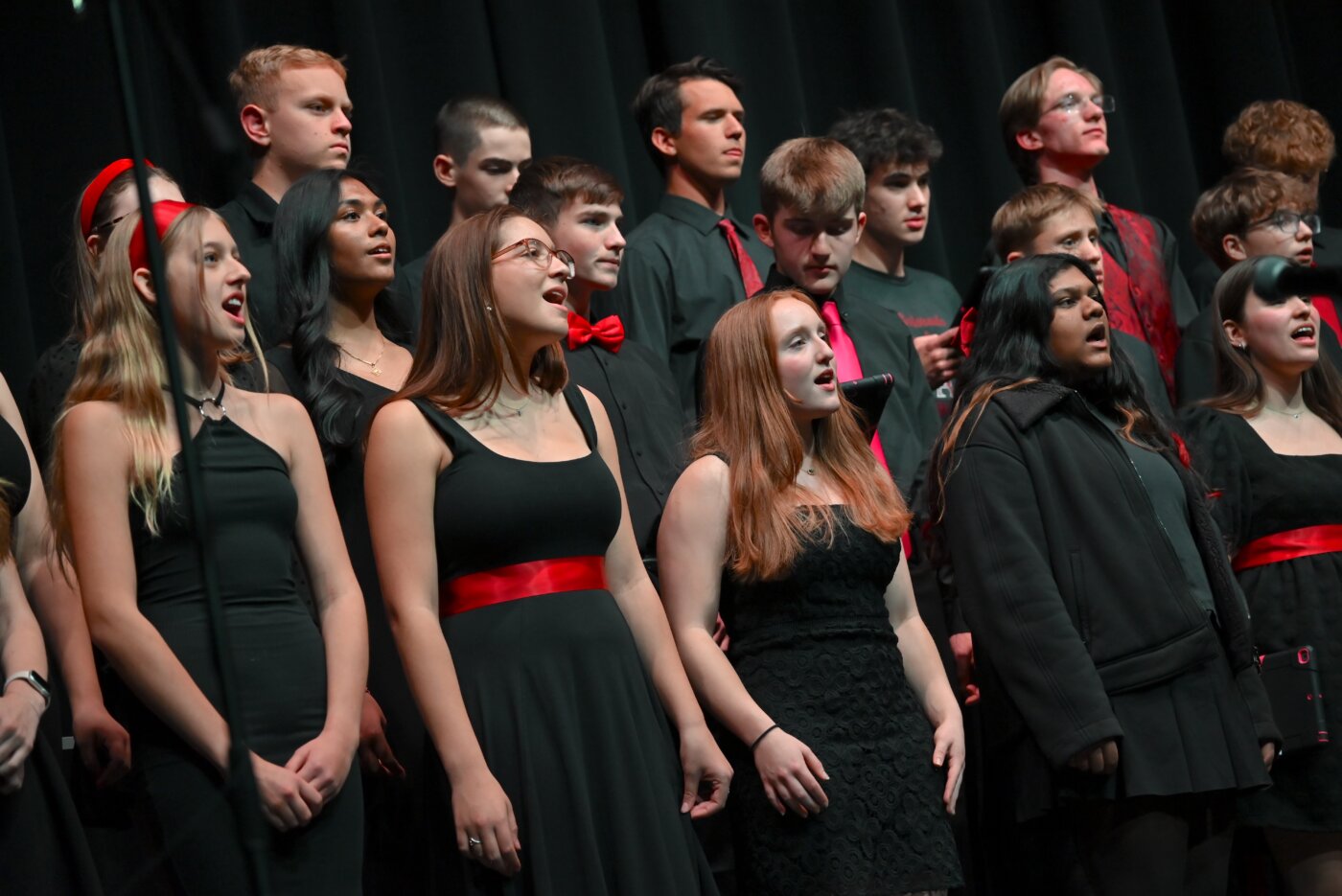
In the Sixth-through-Twelfth-Grade program that Padworski has helped to build, the world-conquering pop of the “Shake It Off” diva, alongside the musical-theater-inspired artistry of a singer-songwriter like Sara Bareilles, have their own place in concerts next to the likes of Mozart. Just as demanding and enlightening as the music that preceded them by some 400 years, he argues, contemporary masterworks of all genres offer the opportunity for singers to rediscover the songs they thought they knew in an entirely new way.
“Taylor Swift songs are meant to be sung solo,” Padworski elaborates, “but here we have an ensemble where the sopranos may be singing that solo melody, and the altos, tenors, and basses are now responsible for singing the bass line, the rhythm section, and the harmonies. They may know the lyrics by heart, but now they get to hear how great music functions like a machine.”
Welcome to Sixth Grade Choir
Indeed, nothing is ever simple for CA’s vocalists, not even Sixth Graders, who have just graduated from CA’s thriving Fourth and Fifth Grade Choir, in which 70-plus Lower Schoolers gain a solid foundation in all the essentials of choral performance: “How do we stand together? How do we follow the music on the page? How do we support each other to make music as a group?”
In the Sixth Grade Choir, which is brand-new this year, Padworski explains, students tackle more complex works, learning to sustain their parts independently while other voices may be doing something different. And for the first time, they get the opportunity to audition to be featured as soloists. “I tell them, ‘You’re now going to have to be bold enough to stand up and sing by yourself in front of your peers—and you may not get the part.’ I can’t describe how magical it is to see young people take that risk, the risk of failing, and have their classmates support them. It’s one of the hardest things they’ve likely ever done.”
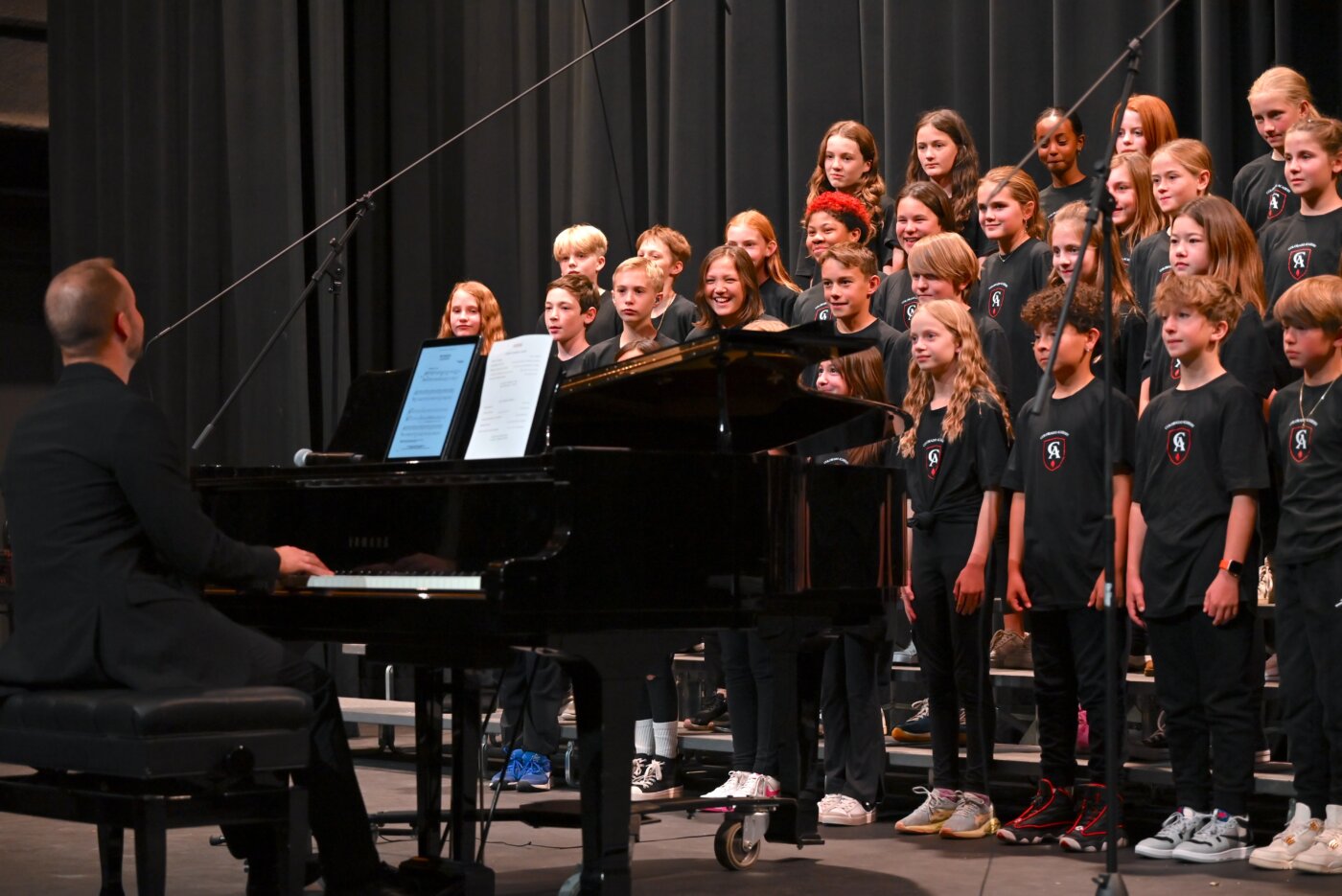
Excellence is the goal. But Padworski impresses upon his students that it takes much more than raw talent to make excellent music. “Our culture puts so much emphasis on what it calls talent, but ask any professional musician what it takes to succeed, and they will tell you that it’s all about developing skills, showing up, and being a good human.”
That’s why Padworski doesn’t refrain from putting challenges in front of even his most novice musicians. By performing works ranging from the American gospel standard “His Eye Is on the Sparrow” to the song “I Ain’t Worried,” from the soundtrack to the film Top Gun: Maverick, he explains, Sixth Graders learn, “Great art is a process that requires understanding, grit, stamina, and kindness.”
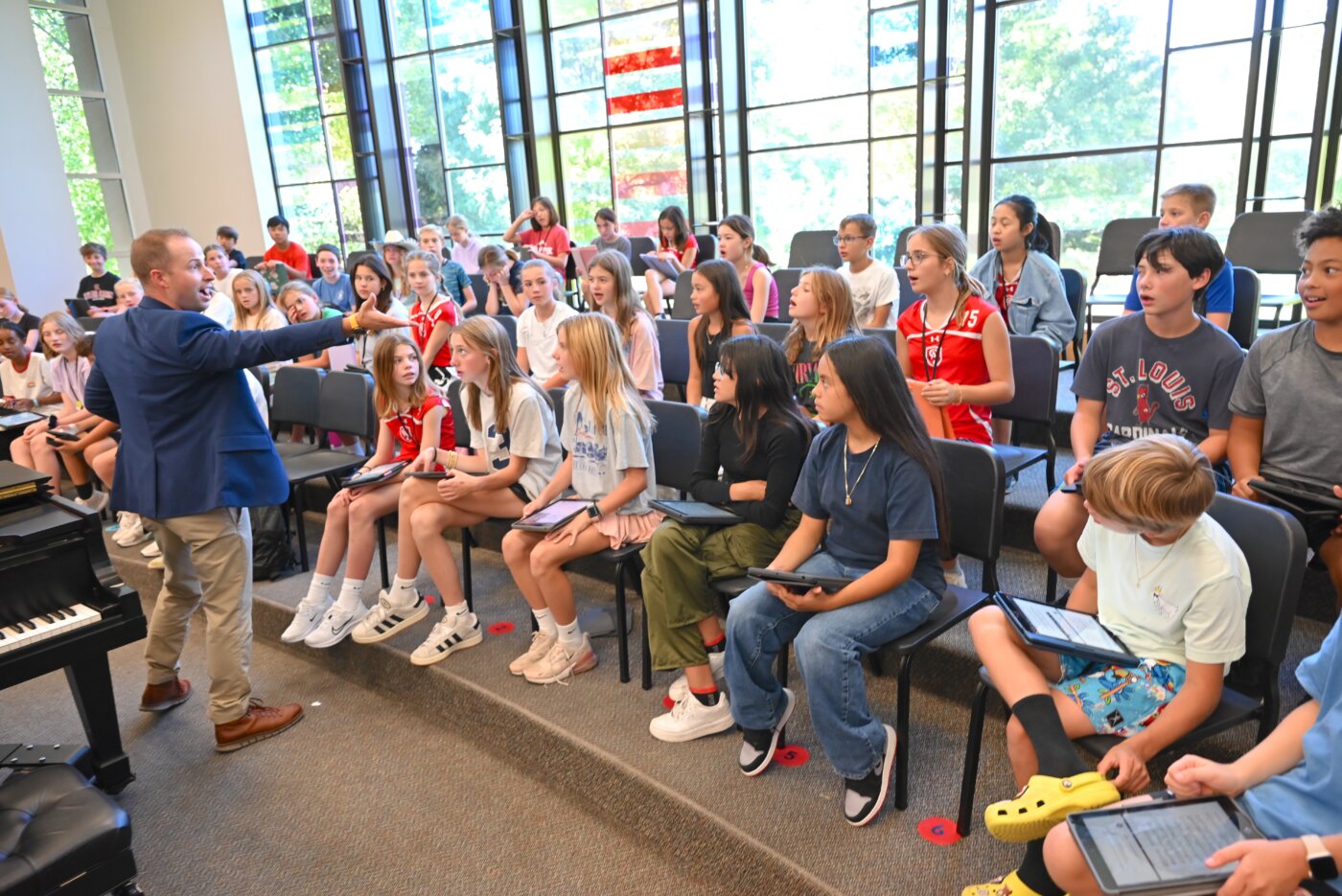
Padworski wants his youngest vocalists to “become comfortable being uncomfortable,” he says. “I could easily assign these students mostly unison pop songs, and they’d sound fantastic. But that’s not the point. You’re not always going to be as successful as you imagine you might—so how will you deal with that challenge? How can you understand the music better, understand your voice better, figure out how to fit within the group better?”
Still, he adds, “My job is to set my musicians up for success.” In the Choir Room in Schotters Music Center, he says, “They know they are safe; it’s okay to screw up. But excellence is always the pursuit.”
Taking music seriously
As students move up to the Seventh and Eighth Grade Choir, the challenges Padworski sets for his singers only grow in difficulty. “I think a lot of people look at Middle School as this sort of liminal time, where everyone just has a rough, difficult go of it, and maybe we shouldn’t take the music as seriously.”
Voices are changing at this age, he acknowledges; kids’ confidence in themselves and their abilities inevitably suffers some blows.
“But I believe in Middle Schoolers,” he goes on. “I care about how they sing; I care that they take themselves seriously. I challenge them to go on stage and give 100%—to raise the level of their skills and effort and to own their performance.”
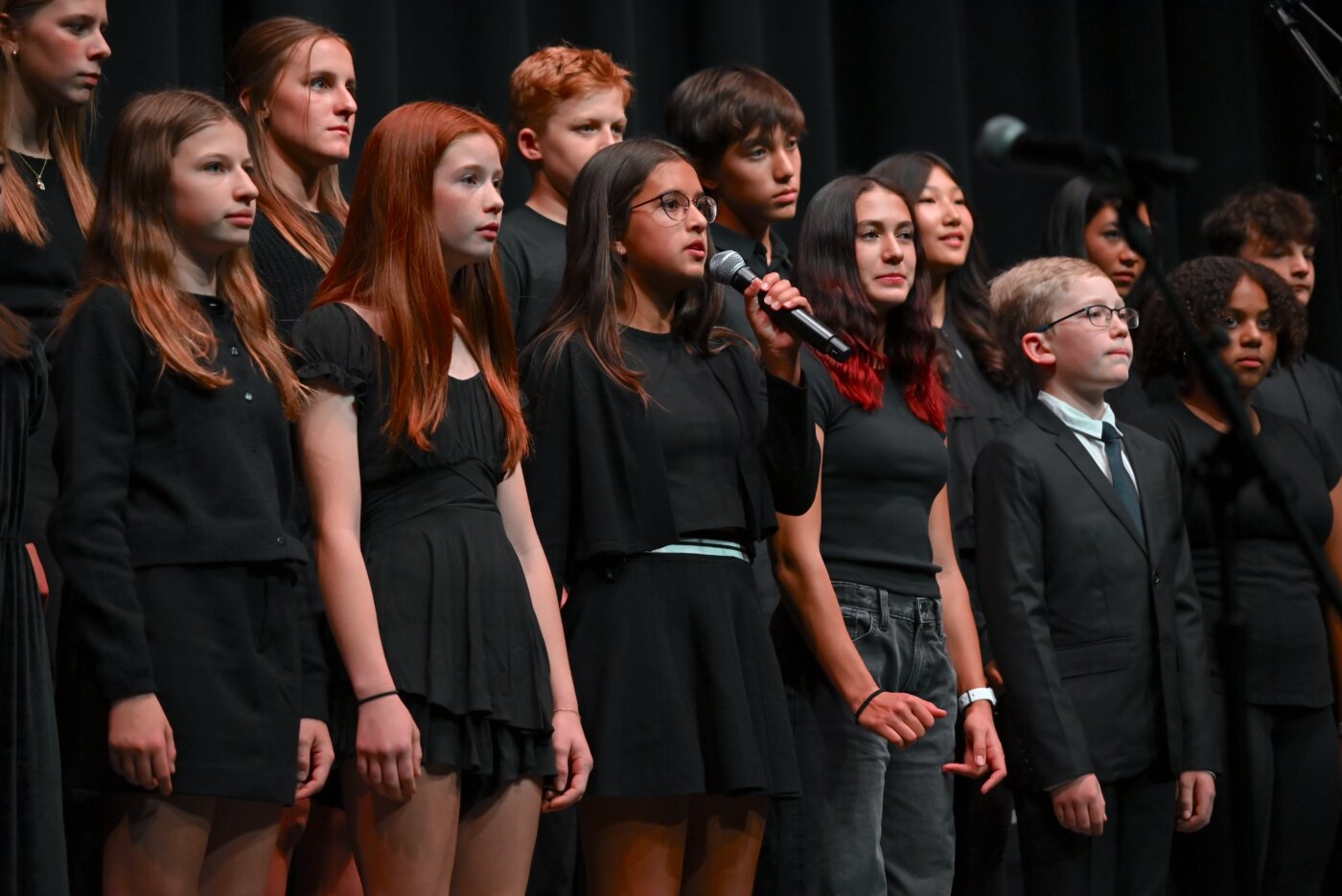
Padworski has his students regularly record themselves on their phones or iPads and email him their “voice part checks,” which he receives by the hundreds every school year. “It proves to me that they know their words, that they’re trying, that there’s some level of accountability. I want them to get over that nervousness about whether they sound good or bad so that we can focus on being better as a group.”
He also insists that students memorize 100% of their music before every concert. “I expect them to be independent and to hold themselves to a higher standard, too. In choir, they’re being asked to be excellent non-stop, because unlike in, say, a math class, we have to prove it on stage in front of an audience. We are asking our students to step into a space where they could make an error, where they are expected to do it right, and totally from memory.”
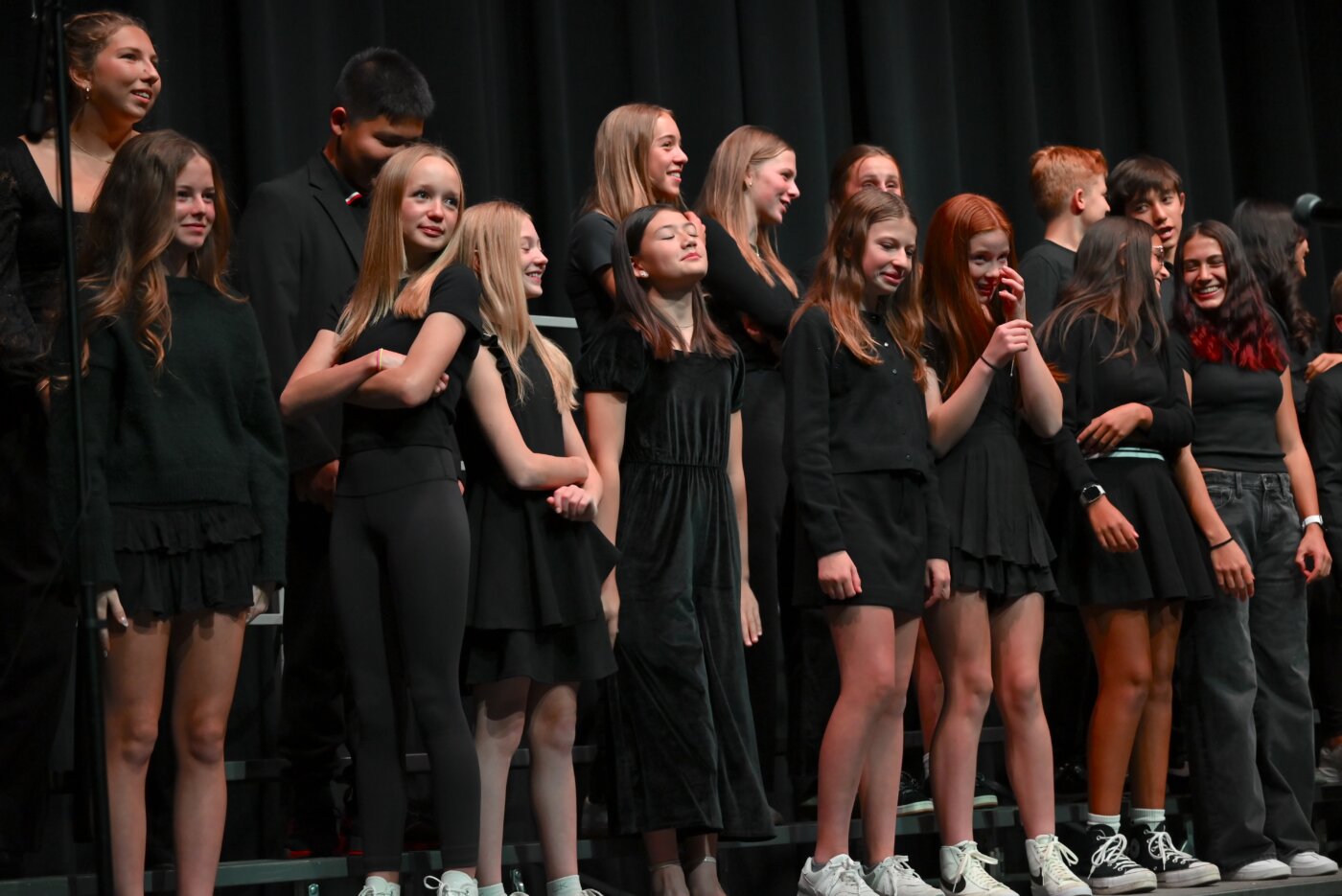
On his tombstone, Padworski jokes, he hopes someone will inscribe the words he constantly repeats to his students in the Choir Room: “Excellence takes work.”
500 years of hits
With the new Sixth Grade choral program feeding the Seventh and Eighth Grade Choir, Padworski now sees a steady stream of skilled musicians arriving in CA’s headlining Upper School ensembles.
Historically, Chanteurs has held a place at the top of the marquee as CA’s most accomplished, audition-only vocal group, with a much larger Concert Choir offering singers of all stripes their chance to take the stage. But for the past few years, Padworski has allowed Chanteurs to swell in size, and the Concert Choir to contract to a smaller group, dubbed Chamber Choir, for now.
“After the pandemic,” he recalls, “our numbers for Chanteurs were really low, but I knew people just needed a reason to sing again.” So the ensemble grew, welcoming voices from Ninth through Twelfth Grades, and a Chamber Choir emerged to focus on an entirely new historical repertoire more suited to the smaller roster.
“It was easy to ‘hide’ when you were one of 20 kids to a part in the Concert Choir,” which often had 70 members or more, says Padworski. “But in Chamber, you’re one of only three per part, so everyone has to step up.”
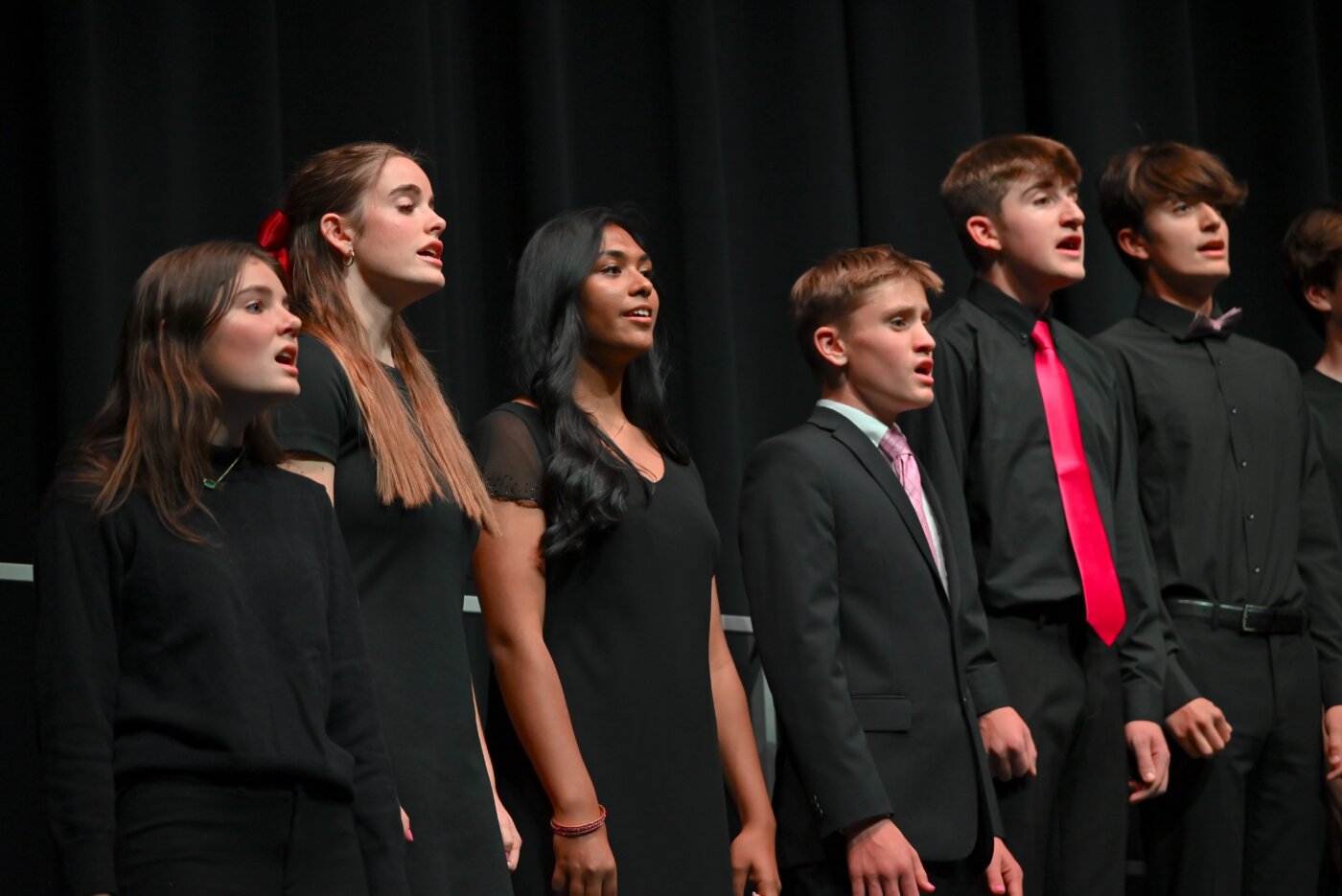
Meanwhile, in Chanteurs, there’s the time and the space for students, as Padworski explains, to focus on telling a story together.
“How often as humans do we have a singular focus with others—kids that are so different and concerned about so many different things, all memorizing the same words and telling the same story. That’s why, for me, vocal music is uniquely powerful.”
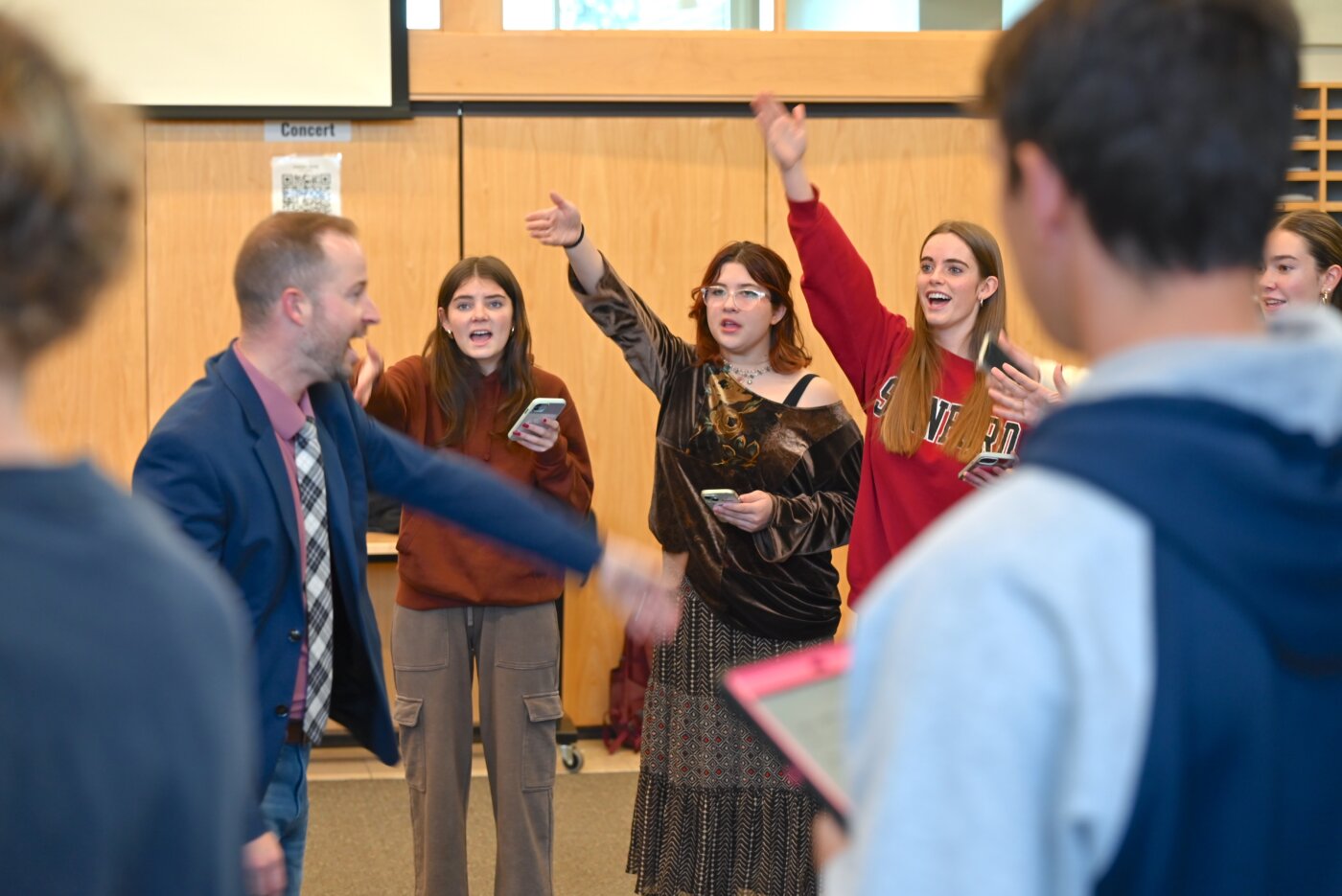
This fall, Chanteurs members have been honing their performances not only of Taylor Swift’s “You Belong With Me,” and Sara Bareilles’ “Little Voice,” but also of the popular Henry VIII composition, written around 1513 when the monarch was barely 20.
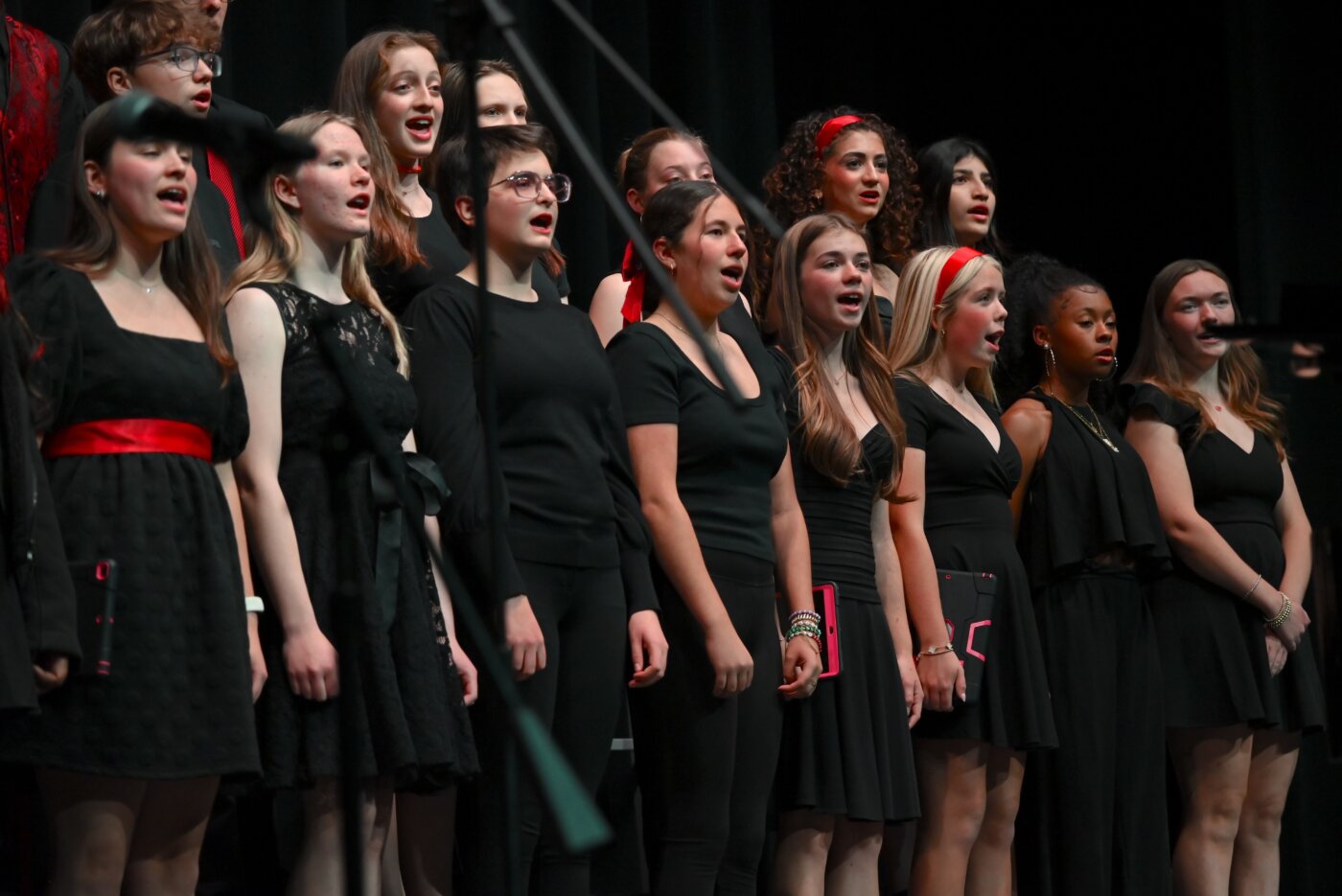
“Pasttime with Gud Companye” is the kind of song that “My students hated to sing at first,” says Padworski. “But once they learned how madrigals worked, they started having fun with the challenge.”
Madrigals—the secular vocal pieces that were popular in Renaissance England—were considered the height of their musical era, highlighting as many as four independent melodies that blended together to produce a singular effect. Ordinarily madrigals would have been sung by four people, but, observes Padworski, with the 42 members of the Chanteurs, “The trick of maintaining and blending those independent lines gets exponentially more difficult.”
That’s not to mention the wide range of ages and voices represented in the group, he adds. “People may not realize that with Ninth through Twelfth Graders, I’ve got some changed voices, some unchanged, maturity levels that are all over the spectrum. That’s probably the most exciting thing about the Chanteurs.”
Bigger and better
But Padworski is not content with just a pair of Upper School ensembles: Capitalizing on the increased demand stemming from the more robust Middle School choral pipeline, he’s introducing a dedicated acappella group in the spring—the first ever at CA.
He’ll also continue to pursue opportunities for his musicians to travel to competitions and festivals out of state and internationally. In 2023, Padworski took a group of musicians from Concert Choir and the Chanteurs to Canada to perform with other student ensembles, and similar trips to Carnegie Hall and even Spain are in the planning stages for future years.
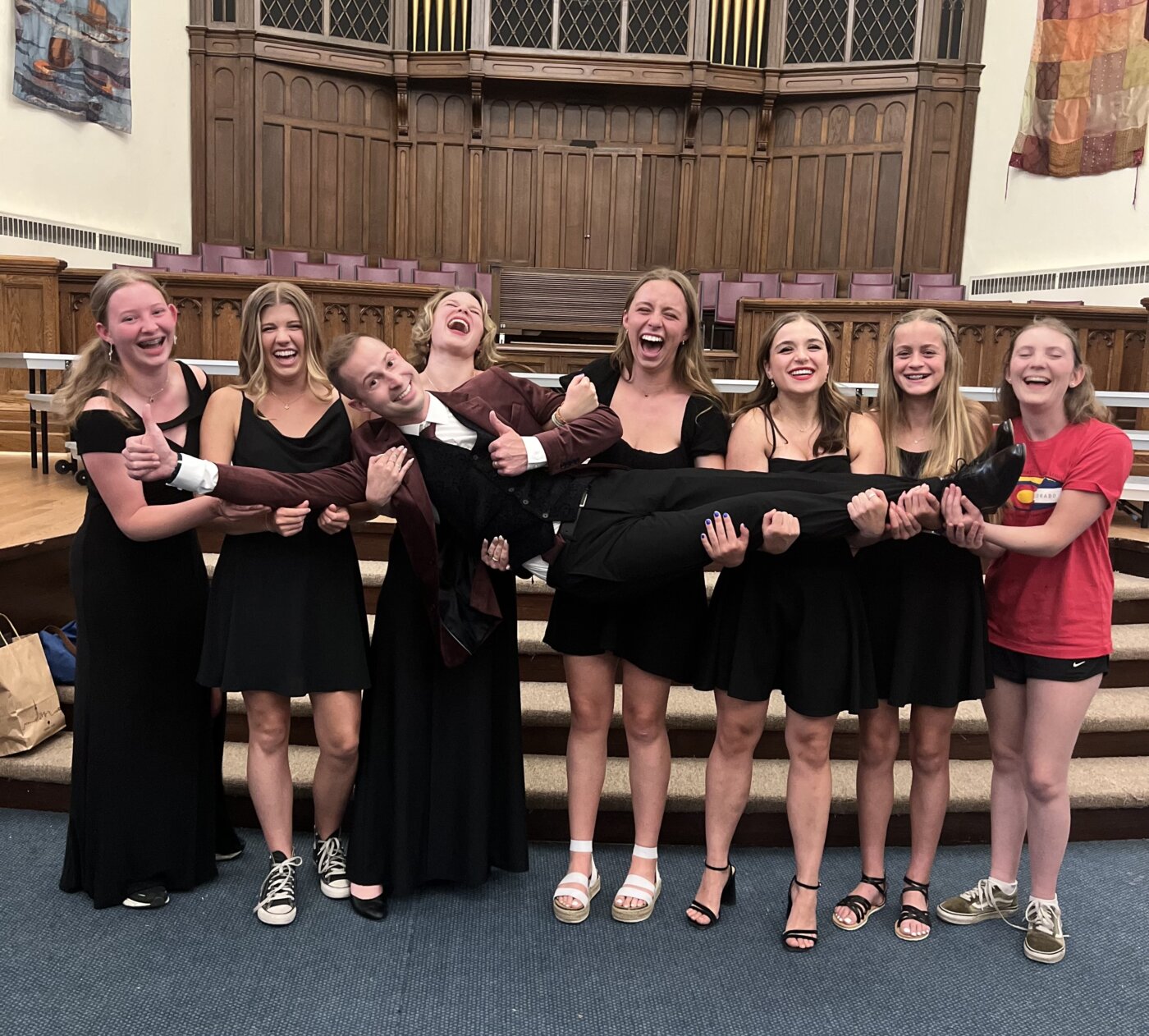
“The more that I can bring our relatively small school to take part in larger experiences next to other top performers from all over the world—the better it is for all of us.”
Padworski is proud to note that CA was host to many of the auditions for this year’s Colorado All-State Choir, a group of 500 high school vocalists chosen from around 4,000 hopefuls. That three CA Juniors and one Senior were accepted—adding to the long list of Mustangs who have been part of All-State under his direction—attests to the effectiveness of Padworski’s insistence on skill development, commitment, and personal growth.
The successful program he’s nurtured since his arrival at CA in 2019 may well reflect his own growth as a musician. Prior to joining the school, he had been Associate Conductor and Technical Coordinator of the Colorado Children’s Chorale and the Artistic Director of The Colorado Chorale, a role in which he still serves; earlier, he was Principal Pianist and Symphonic Rehearsal Pianist for the Colorado Symphony Chorus and Orchestra in Denver. Today, he remains busy, supervising graduate students and conducting their treble choir at the University of Denver Lamont School of Music.
An instrumentalist by trade, with a BA in saxophone and organ performance, before going on to obtain his doctorate in conducting and music literature, Padworski came to choral music almost by chance, when a piano performance gig at the Denver Center for the Performing Arts turned into a role conducting a choir.
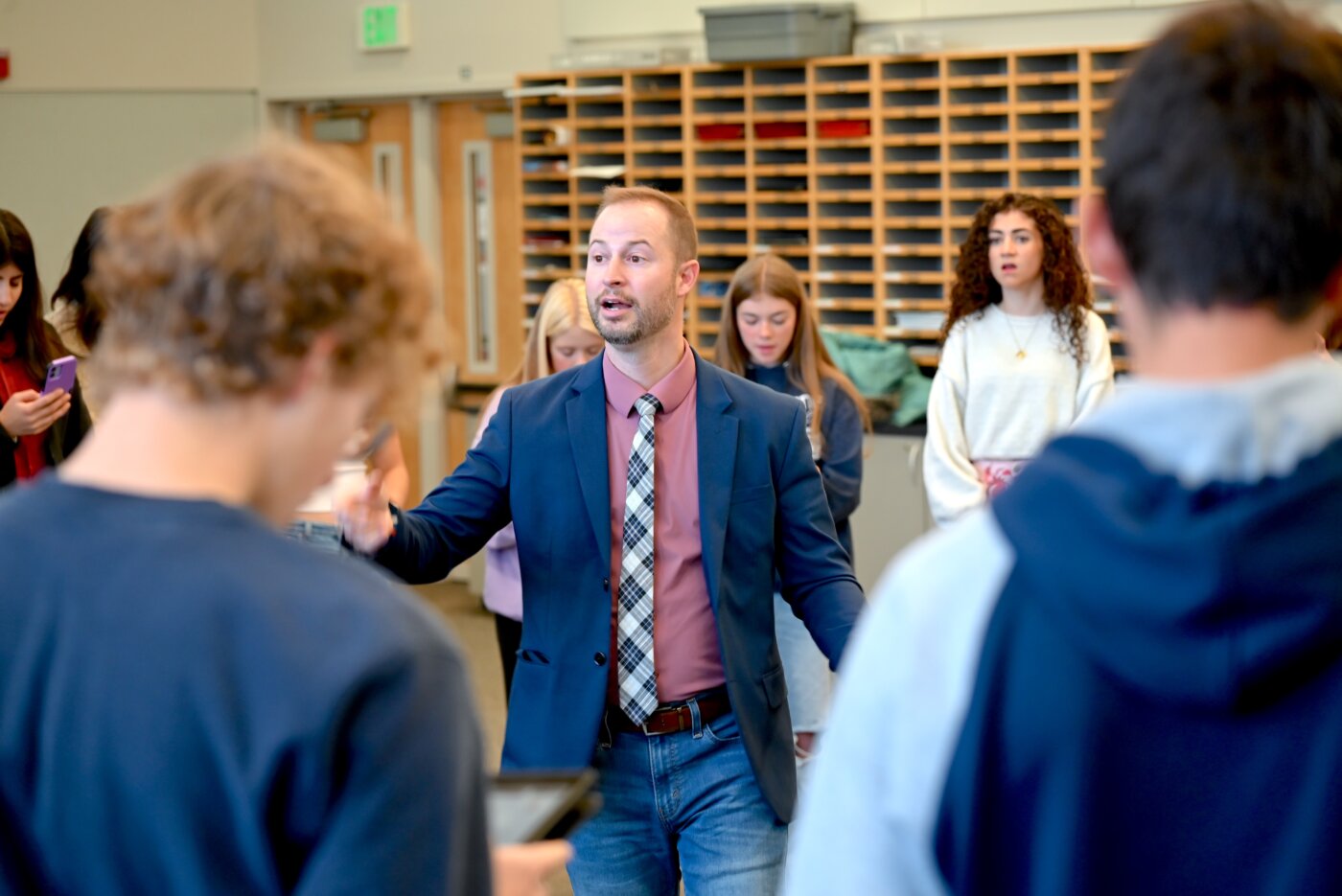
“I had no idea how to work with singers. I was playing the piano professionally; I had little experience with choral repertoire or how to get 100 people in a choir to listen to you.”
Nonetheless, he dived into the work at “full throttle,” and quickly realized his training as an instrumentalist held the key to coaxing excellence from his singers.
“Singers, I hate to say, are sometimes seen as the laziest of musicians; they’re suspected of earning success almost by cheating—using ‘talent’ and nothing more. But I’ve always known there’s more to it. When you’re playing an instrument, you’re expected to be musically literate: to know how to read rhythms, to navigate a score. It’s the same with all great vocalists.”
Padworski continues, “So I have always cared about that for my choirs, and I care about that for my students today. I want them to know they’re not ‘just’ a singer. They’re a musician, as much as any violinist or oboe player. We are all engaged in the same work: There’s a story to be told, and we are all telling it together.”
